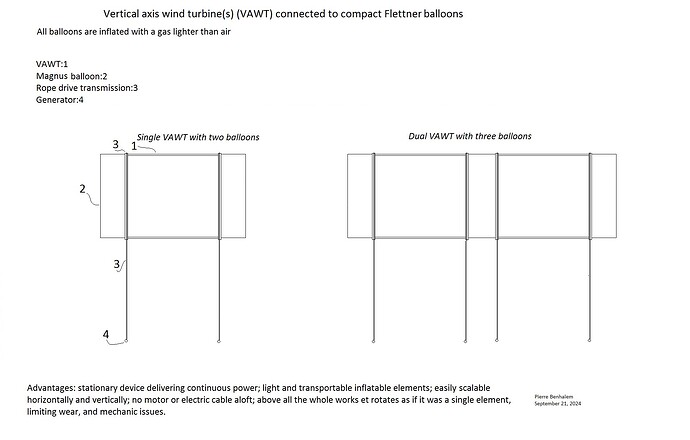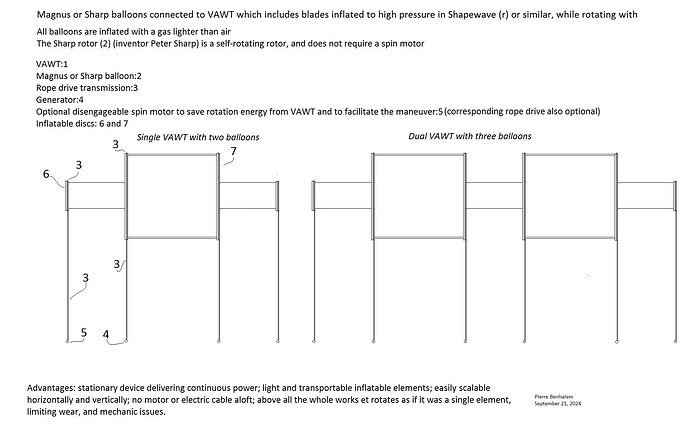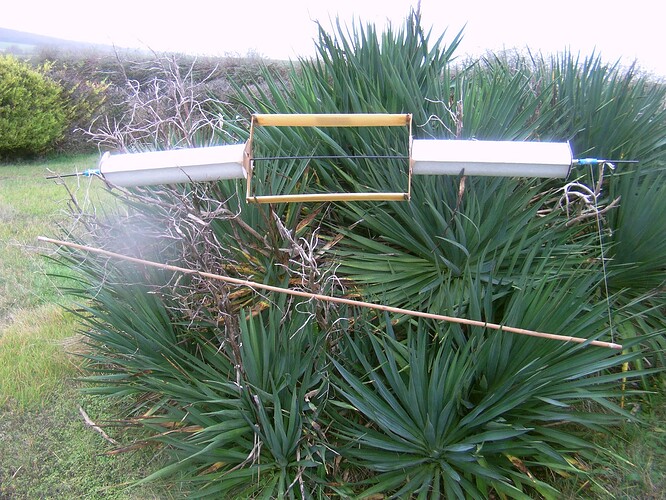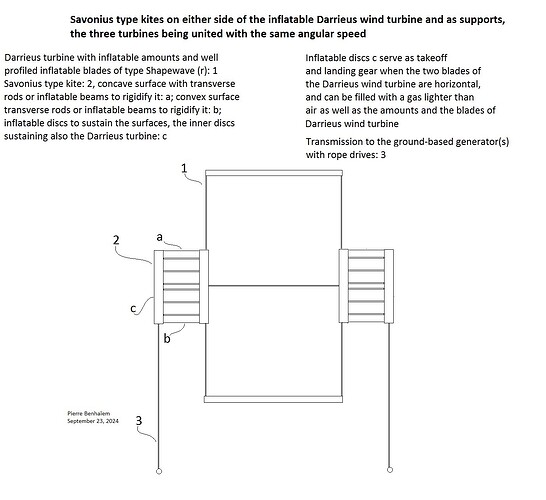A preprint: Vertical axis wind turbine(s) connected to Flettner or Sharp balloons, DOI:10.13140/RG.2.2.17939.08487.
Extracts as two sketches with their respective captions:
Basic device, the simplest if the low aspect ratio Flettner balloons produce sufficient lift without excessive consumption due to high speed rotation.
Flettner or Sharp balloons benefit from a higher aspect ratio, a lower spin ratio, and probably a lower power consumption. The construction is a little more complex. Motors (5) installed on the ground rotate these rotors by rope drive transmission (3), thus relieving the VAWT(s) and facilitating maneuvers, particularly takeoff and landing.
A video with Sharp rotor :
Photo corresponding to the video, with caption:
A VAWT in the middle, and a Sharp rotor at each side. This was tested, video [8]. The lift was noticeable although probably weak.
In the section of “description and figures” I added a similar device with the following caption:
Caption
This figure does not appear in the body of the text but the device described is very similar to the other devices and can be appended. The Flettner or Sharp balloons are replaced by Savonius type self-rotating kites which also generate a Magnus effect but also in addition a significant torque. As the VAWT shown here sweeps a large area, the Savonius rotors may need to be longer in order to counter the drag generated by the VAWT. The sole purpose of rope drives is to transmit torque from the combined VAWT and Savonius rotors. The TSR of a Savonius kite can be estimated at 1, and that of a VAWT at 3, perhaps more. Their respective diameters are adjusted, just like the Sharp balloons with their VAWT. The discs are of a much smaller diameter than that of the VAWT which then includes amounts supporting the blades. This provision could also apply to two of the sketches depict Flettner or Sharp balloons with a diameter also much smaller than the diameter of the VAWT, so that the diametrical discs of the VAWT would be smaller and less heavy, the amounts partially replacing for the low diameter discs. A lattice of inflatable bars can increase the rigidity of the VAWT. Usually a Savonius turbine is installed inside a Darrieus turbine to help starting. But such a disposition would destroy the lift of a Savonius turbine settled horizontally as shown with tests using a Sharp rotor inside the Darrieus VAWT. It is the reason why Flettner, Sharp and Savonius rotors are settled externally to the main Darrieus VAWT. During very old tests I noticed that Savonius kites had a good torque, being able to rotate a Flettner rotor of same dimensions, the whole flying. The same applied for Darrieus VAWT with the difference that the Magnus cylinder lifted frankly but the whole thing was unbalanced and did not really fly because the Darrieus VAWT does not generate Magnus effect. It looks that both Savonius and Darrieus VAWT could lead to a successful combination, the Savonius VAWT being settled at each side of the Darrieus VAWT because they generate lift by Magnus effect, in addition to the high torque helping start. All parts are inflatable except for the fabrics inside Savonius kites. A gas lighter than air can fill the inflatable parts. For this arrangement, the elements are light, and the part lighter than air can be reduced or even perhaps eliminated. These devices can also be stacked horizontally.




